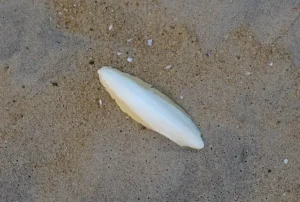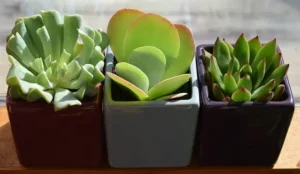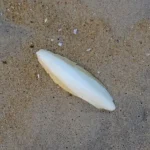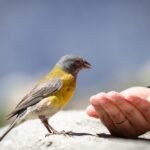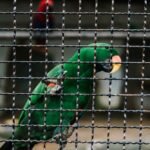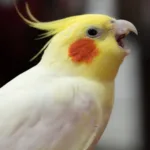Conventional paints release volatile organic compounds (VOCs) into the air, which can be harmful to birds. These fumes continue to be released into the air even after the paint has long dried, so it is not safe to bring your bird to the treated area immediately.
These paints also pose the risk of heavy metal poisonings as birds often chew on cage bars. When birds chew on cage bars, they might ingest metals like zinc, copper, and lead, which are commonly found in regular paints.
Whether you have to repaint your room or redo the worn-out paintwork of your bird’s cage, it is important to choose a paint that is bird-safe.
Zero VOC paints are the safest type of paints for birds. These paints are formulated to emit minimal volatile organic compounds, reducing the risk of harmful fumes.
Quick Navigation
Dangers Of Using Conventional Paints For Birds
Paints affect both the short-term and long-term health of birds. Paint fumes are bad for the immediate health of the bird and heavy metals found in the dried paint can cause long-term complications.
Toxic Fumes
Most traditional paints have VOCs in some amount. Volatile Organic Compounds are chemicals that evaporate at normal indoor temperatures and mix with the air. breathing in high levels of VOCs can be harmful to both humans and birds.
However, birds have a much more efficient system of breathing compared to us, which makes them even more vulnerable to the immediate effects of gaseous pollutants.
Exposure to VOCs can cause respiratory problems in birds. They may show symptoms such as coughing, wheezing, and panting.
Heavy Metal Toxicosis
Heavy metals present in paints such as lead, cadmium, chromium, and zinc can have negative effects on bird health. When birds chew on painted cage bars, they may consume these heavy metals.
These metals can have toxic effects on various organs of the body. They may affect the nervous system, lead to neurological issues, and cause damage to the kidneys and digestive system.
What Paint Is Safe For Birds?
An ideal paint that is safe to use for bird cages is one that adheres well to the cage bar, does not easily chip, has zero VOC, and does not contain heavy metals.
Most types of Oil-based, latex, acrylic, and watercolor paints come in different varieties including Low VOC, Zero VOC, and regular versions.
So it is not so much a question of the type of paint. Both oil-based paints and water-based paints can be harmful if they contain VOCs.
So you should look for paints that are zero VOCs and nontoxic. Even if you use paints labeled as “low-VOC,” they might still have some of these chemicals that can produce toxic fumes and pose a threat to birds.
On the other hand, zero-VOC paint has very little VOC, but it is still not zero. They contain 5g/L or less of VOCs, which meets the criteria of paint emissions standards.
It is also important to check if the paint doesn’t use VOCs in the colorants that they add to the main paint. Sometimes, even if the main paint doesn’t have VOCs, the colorants might. So you should ensure that both the paint and the colorant you buy are zero-VOC.
Are Antimicrobial Paints Safe For Birds?
Antimicrobial paint is designed to prevent the growth of microorganisms like bacteria, fungi, and mold on painted surfaces. These paints are formulated with antimicrobial agents, which are chemicals that inhibit the growth and reproduction of these organisms. However, antimicrobial paint are not appropriate for birds.
According to a study published in the PeerJ, antimicrobial paints have ecotoxicological effects and silver, copper, and zinc are often released in substantial amounts (up to 100%) from the coatings into the aqueous environment. Chitosan and titanium were primarily used as carriers for other release-based antimicrobial ingredients rather than being actively released themselves.
Tips To Keep Your Bird Safe While Painting
- When painting, relocate your birds to a different room where the fumes cannot reach.
- Proper ventilation and using fans will help the paint dry faster and disperse VOCs outside.
- Wait until the paint has dried completely, which may take a few days, and ensure the fumes and smell are gone before bringing your bird back.
- Use an Air Purifier specifically designed to remove volatile organic compounds (VOCs) from the air.
Why Do Birds Chew On Cage Bars?
Chewing on different things including cage bars is a natural behavior in birds. However, they also have various motivations for chewing different items. Grooming is a common reason, as birds use their beaks to trim rough layers of keratin.
They also chew as a means of exploration, and to interact and understand their surroundings. Sometimes, a bird may chew on cage bars because of stress and boredom. When they feel anxious or lack mental stimulation, they may resort to chewing as a coping mechanism.
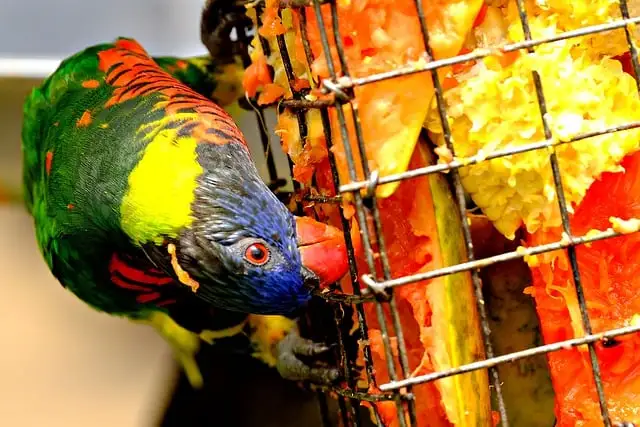
How To Discourage Your Bird From Chewing On Cage Bars?
Chewing itself is not a problem and you cannot stop your bird from doing it. However, you can make them chew less on cage bars by providing them with better options.
Cuttlebone
Cuttlebone is derived from the internal shell of cuttlefish. It can be put in the bird’s cage for them to chew on. It also serves as a rich source of calcium. The hard texture of cuttlebone also provides a suitable outlet for birds’ natural chewing instincts, which may make them less inclined to chew on other things.
Chew Toys
Chew toys serve as a form of mental and physical stimulation. They are available in different materials including wood, stainless steel, and natural materials which can be shredded as well. It not only keeps them engaged but provides a constructive outlet for energy and helps them be physically active.
Wooden Perches
Perches are more than just a place for birds to rest. Birds need a variety of perches in their cages made of different materials. Wooden perches are often used by birds to trim their beaks and nails. You should have wooden branch perches in your bird’s cage as it is helpful in trimming activities and gives them something to nibble on in their leisure time.
Alternative To Painting Your Bird’s Cage
With paint posing such risks to your bird’s health you may wonder if painting a cage is at all necessary. If you do not want to paint your bird’s cage and want a much safer and easier solution, you can go for a stainless steel cage.
Stainless steel cages offer several advantages, such as being resistant to rust and corrosion, which makes them durable and long-lasting. Unlike painted cages that may chip or peel over time, stainless steel cages maintain their integrity.
Stainless steel is a safe material for bird cages because it’s non-toxic, zinc and lead-free, so you don’t have to worry about ingestion of toxic metals by your bird. It is also very easy to clean and sanitize. Although stainless steel cages are in general costlier than regular bird cages, they have long-term benefits in terms of safety and durability, which makes them a worthwhile investment for the well-being of your bird.

